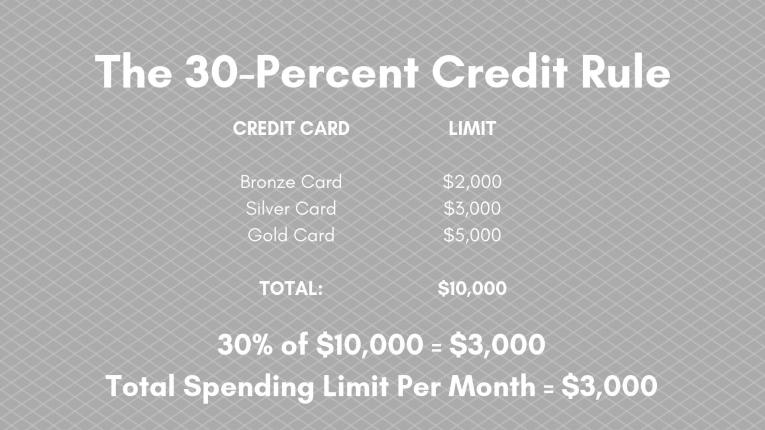Boost Your Credit Score By Following The 30 Percent Credit Rule

Pexels/Rawpixel
You know that saving money and paying down debt can help you improve your financial situation, but there’s more you can do. Your credit score is a huge part of your financial life and it’s important to not only be aware of it, but also understand the ways that it can be affected. It’s great if you’re good at swiping your credit cards and then paying them off every month, but let’s take it a step further.
The 30 Percent Credit Rule
This rule is pretty simple and could make a big difference in your financial freedom. After signing up for a credit card, you’re given a certain spending limit, which is based on your credit history and credit score. If you have a great credit score and have good experience with other lines of credit (like student loans, another credit card, etc.), you’ll receive a higher limit.
Now, you know that just because you’re given a spending limit doesn’t mean you should max out your card, right? Rule of thumb: Always spend within your means and stick to your budget. Credit cards come with high interest rates that are no joke, so carrying a balance on a card from month to month can really add up.
To help you manage your spending, stick to the 30 percent credit rule: Never spend more than 30 percent of your total credit limit, across all cards, per month.
Here’s an example: Let’s say you have three credit cards with limits of $2,000, $3,000 and $5,000. That’s a total credit limit of $10,000. The 30-percent credit rule says that you shouldn’t use more than 30 percent of that $10,000, or $3,000. To find yours, just add up your credit card limits and multiply by .30 (30 percent).

Swirled/Hilarey Wojtowicz
You can spend more if needed, but it’s recommended that you stay below 30 percent so that you can continue to boost your credit score. It’ll also help you maintain a balanced approach to spending on credit cards. If $3,000 is your 30 percent credit rule limit, then you might want to spread it across all three cards per month. And if you’ve got rewards or cash back credit cards, this could be a great way to earn more points, miles or money.
Stick to the 30 percent rule with these other tips:
- Always monitor your credit card activity. One fraudulent charge could put you over the credit limit and cause your credit score to go down.
- Be mindful of your credit limit. Often times, smart credit spenders will receive increases in their limits over time. If your limit goes up, the percentage that you’ve been using goes down. In that instance, you may have a little more room to spend within the 30 percent credit rule.
- As your salary increases, let your credit card companies know. They may increase your credit limits, which increases your total credit limit, as well as the room you have to spend within the 30 percent credit rule.
Be smart with your spending on credit cards so that you can boost your credit score. With a very good or excellent credit score of 740 or higher, you’ll be more likely to be approved for a mortgage, car loan, higher credit limit and more. And who doesn’t want that type of financial freedom?
RELATED
6 Things You Didn’t Realize Could Affect Your Credit Score
How To Find The Best Credit Card For Your Lifestyle
10 Financial Planning Apps That Will Help You Save Money











